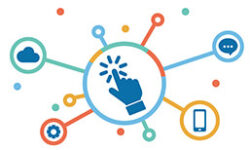
Correlational research, a commonly used methodology in academic writing, aids in determining the degree of relationship between two variables. Understanding its proper execution can empower you to uncover intriguing patterns and relationships, strengthening the depth and breadth of your study’s conclusions. Learn about correlational research and how to use it in your paper properly below. Harness its potential to elevate your research impact.
Definition: Correlational research
Correlational research examines the relationship between variables. It is done without manipulating any of the variables themselves and is therefore used to measure the strength or direction of a relationship if one is found.
The direction of this relationship can be positive, negative, or non-existent (zero).
| Variables | Example | |
| Positive correlation | All variables change in the same direction | The more exercise you do, the more calories burnt. |
| Negative correlation | Variable change in opposite directions | The more you work, the less recreational time you have. |
| Zero correlation | No relation between variables | Tea consumption has no relationship to intelligence. |
Correlational research vs. experimental research
Correlational research and experimental research are both used to study relationships with quantitative methods. However, there are some crucial differences:
| Correlational research | Experimental research | |
| Purpose | Test strength of relationship | Test the cause and effect of a relationship |
| Variables | Researcher observes variables without manipulation | Researcher manipulates a variable to study its effects |
| Control | Limited control that may not identify additional variables | Other variables are controlled so that they can’t impact those being studied |
| Validity | Has external validity so that conclusions can be generalised across other settings | Has internal validity, so you can make strong conclusions on your subject(s) |
When correlational research is used
Correlational research should be utilized for data gathering when looking for general results in real-world studies.
Investigating non-causal relationships
If you want to discover whether a relationship between two variables exists, but you’re not expecting it to be causal in nature, correlational research can be valuable.
Correlational research is particularly useful for recognizing general patterns, that can then help inform decisions.
Exploring causal relationships between variables
Correlational research can be used to identify causation when experimental research is too costly or unethical.
It may provide the impetus for further research as a base dataset to help develop causal theories.
Testing new measurement tools
If you’ve developed a new tool for measuring a variable and its effects, you can use correlational research to test its reliability.
Data collection methods in correlational research
There are many data collection methods to choose from in the social sciences. These include everything from surveys and observation methods to historical statistical data.
Choosing the correct method is crucial to creating a solid piece of research. Begin by choosing a representational sample that’s free from personal bias.
Surveys
Surveys are a common method for generating strong data and results. Commonly gathered through questionnaires, you can conduct this research in person or on the street, or with postal, phone, or online surveys where you can’t guide the subject(s).
Surveys are useful because they’re quick and flexible. Still, you must avoid bias when wording surveys and keep data relevant without guiding the answer(s).
Naturalistic observation
Naturalistic observation is a form of field research that involves studying real effects as they happen in real life. It can involve recording events like counting visitors to an exhibit or describing actions as they happen.
While naturalistic observation can be both qualitative and quantitative, the correlation should be analyzed through quantitative data.
Naturalistic observation is crucial for recording real-world events and context, but it can be extremely time-consuming. As it’s done personally, bias is also possible and must be addressed in the methodology outline.
Secondary data
Secondary data is any data that you haven’t conducted yourself. This can be an extremely valuable and effective source of historical correlational research. The more comprehensive and official the data, the more reliable the research.
While inexpensive and ready-made, secondary data does lack reliability if you cannot check how data is gathered.
How to analyze correlational data
Data alone isn’t capable of indicating correlation. You need to analyze it to elaborate on the relationship. You can do this through correlation or regression analysis.
Regression analysis
Regression analysis predicts how much change in one variable affects change in another.
This is visualized with a regression equation that describes the relationship on a graph. This equation can then be used to predict the value of a certain variable based on the value of another.
Only use regression analysis after correlation is confirmed
Correlation analysis
Correlation analysis is used to create a correlation coefficient, where the strength of a relationship and its direction are described by a number. This number expresses the degree or intensity of this correlation.
Most social studies utilize the Pearson product-moment coefficient, where an r is used to assess linear relationships.
FAQs
Correlational research is important because it identifies and provides insight into real-life relationships. This can be used to develop effective policies and theories, or conduct more thorough experimental studies.
Correlation is a mutual connection between variables that isn’t always causal.
At least two variables are traditionally studied in correlational research – but it’s also possible to study more than three.
